

Over the past year, I began noticing that watches from the Venezianico brand were becoming increasingly popular on our local watch forum. More and more members were proudly sharing their new timepieces from the brand. I liked what I saw—so I decided to dig a bit deeper and explore what Venezianico was all about.
I visited their official website and quickly realized that many of the models I found most appealing were already sold out. The most interesting among them was a chronograph called Bucintoro. With nothing compelling available for immediate purchase, I simply signed up for their mailing list to stay updated on future releases.

Only a month or two later, a new version of their Nereide model was announced—called Nereide Agata. I liked the design right away and decided to preorder it. As a result, at the beginning of May, I became the proud owner of my very first Venezianico watch.

In the time between placing my order and the delivery of the Nereide Agata, I realized that Venezianico is a very productive brand. Almost every month, they release a new edition or special series. Two particularly interesting ones were the Nereide Purple and Bucintoro 1969. Sadly, I had to pass on the Purple Nereide since I already had a Nereide model on order. As for the Bucintoro 1969—an absolutely stunning tribute to the 1969 Moon landing—it featured a Lemania 1873 chronograph movement (the base for the famous Omega 861). It had everything that would’ve made me go crazy back when I was a passionate collector of space-themed watches. Luckily—or perhaps unfortunately—it was priced at €4,500, so it was just expensive enough to stop me from making an impulsive purchase.
But that wasn’t the end of my Venezianico story. Just two weeks ago, I received a WhatsApp message from Alessandro, one of Venezianico’s co-owners:
“Hi, how are you? I wanted to let you know that we always offer special treatment to our loyal customers like you. Can I offer you a great promotion on the model you like the most?”
I replied positively, adding that my favorite model—the white Bucintoro—was unfortunately sold out.
Alessandro responded:
“Let me check if I can assemble one last piece for you. Give me a moment, I need to talk with my watchmaker.”
A few minutes later:
“OK, we still have all the parts, and our watchmaker Daniele will be happy to assemble one last piece for you right now. I can offer you a nice bundle: the watch with both a leather strap and bracelet for €1,350. If you order it now, you’ll receive the Bucintoro tomorrow.”
I don’t know if this was just a clever sales pitch or if Daniele really did assemble a final Bucintoro just for me—but I accepted the offer. And as promised, the very next day, the watch was already on my wrist.
Now that I’ve explained how both of these Venezianico watches ended up in my collection, it’s finally time to focus on them in detail.


As the name suggests, the company has its roots in Italy, with its main atelier located near Venice. Venezianico was founded in late 2017 by brothers Alberto and Alessandro Morelli. Their collection is structured into three main product lines: chronographs (Bucintoro), diver watches (Nereide), and classic dress watches (Rendétore). As you can see, all the names are directly inspired by the rich history of the Venetian Republic—Bucintoro was the ceremonial galley of the Doge, while Nereide was the name of the very first Italian submarine.
The Bucintoro line currently includes only a few models: the basic black and white chronographs, and the newly released Bucintoro 1969 edition.
On the other hand, the Nereide collection is much broader. It ranges from entry-level models to Tungsten, GMT, and UltraLeggero variants. If you’re not familiar with the full lineup, I suggest taking a moment to browse the entire collection on their website here.
Nereide Agata belongs to the highest tier of the Nereide line, which means the watch uses the Sellita SW200-1 movement (while the basic models are powered by Seiko NH3x movements). One of the standout features is the bezel insert, made from a very unusual material — tungsten (also known as wolfram). The dial, as is typical for this line, is made from a semi-precious stone. In the case of the Agata, that stone is agate — a mineral that forms within volcanic rocks.
The combination of the agate dial and the tungsten bezel results in a stunning watch. As with almost all natural stones, agate displays uneven, layered tones — in this case, various intensities of orange — which gives the dial a unique and dynamic appearance. The designers wisely opted for small, unobtrusive text on the dial, keeping it limited to just a few lines so the beauty of the stone remains front and center. There are no numerals, only clean hour index markings, and the hands are simple yet effective — a minimalist design that works extremely well here.
The bezel with its tungsten insert truly stands out. It has a noticeably glossy finish. Tungsten, known for being the hardest and most scratch-resistant metal, also has the highest melting point of any element (you may recall it was once used in light bulb filaments). So, it’s actually a very sensible material choice for a bezel insert, offering excellent long-term durability. The bezel action itself is precise, smooth, and has just the right amount of resistance for my taste. My only complaint is about the size of the numerals on the bezel — they’re too large in my opinion.
The crystal is, of course, sapphire with anti-reflective coating.






The watch originally comes on an orange rubber strap, with a color perfectly matched to the dial. The entire watch is very well balanced and thoughtfully put together. The crown is signed, and on the caseback, a volcano is engraved—a subtle nod to the geological origin of agate.



The Bucintoro is very different, but once again, beautifully and thoughtfully designed. While it doesn’t feature a special stone dial like the Agata, the design remains both attractive and clean. The panda-style dial is elegantly accented by a small red Bucintoro logo, adding just the right amount of contrast. A tachymeter scale is present on the outer ring, but it’s subtle and doesn’t overpower the dial. The hands are simple and functional, in line with the overall minimalist approach.
Although the movement used is the Seiko NE88 chronograph with a column wheel (which supports a date complication), the designers chose to omit the date entirely. That was undoubtedly a wise decision—the presence of a date window would have disrupted the clean symmetry of the dial.




The caseback is again closed (though I would have preferred a display back, as the Seiko NE88 is not very common and I would have loved to see it). This time, the caseback is engraved with the Bucintoro ship.
The grey leather strap is excellent — to be honest, I expected nothing less from an Italian company.
What’s very interesting is that the cases of both watches are basically the same, with a diameter of 42mm and 22mm lug width. I only noticed this detail when I received the additional bracelet for the Agata, and at the same time a bracelet for the Bucintoro as well — I realized I had been sent two identical bracelets for two different watches.



Despite this, the Bucintoro is thicker than the Agata due to the raised sapphire crystal above the case. Otherwise, the other dimensions are identical.




As mentioned earlier, I received two identical bracelets, each packed in its own box. Removing links is quite straightforward—the links are held together by pins that can only be pushed out in one direction, following a very basic yet effective system. The bracelet is very comfortable and well-made, though I do miss having at least one half-link to allow for a more precise fit on a wider range of wrist sizes.
I would also appreciate if the standard lugs were replaced with quick-release ones, as this would make swapping between straps and the bracelet much faster and easier. As you’ll see shortly, I experimented quite a bit with different strap and bracelet combinations on both watches, and a quick-release system would definitely enhance that experience.
Regarding the movements I mentioned earlier, I’m pleased to report that the Sellita SW200 is perfectly regulated, running at +1.5 seconds per day. The Seiko NE88 also performs well, with an average gain of +4 seconds per day.



The luminova on both watches is very good, with the Agata, as a diver’s watch, performing better in this regard. However, Bucintoro’s luminova is far from disappointing—I particularly like that only the main hour and minute hands are lumed, which adds subtlety to its design.
I almost forgot to mention water resistance: the Agata offers 200 meters, while the Bucintoro has 100 meters. Not extraordinary for a diver’s watch like the Agata, but quite decent for a chronograph like the Bucintoro.
Now it’s time for some wrist shots. I must say both watches are very comfortable to wear! Check them out first on their original straps.
Now, both watches on the bracelet:


I have to point out again that the same bracelet is used in all the pictures (I haven’t even shortened the second one yet—it’s still in its original packaging). I was genuinely surprised by how differently the two watches looked on the bracelet compared to their original straps. The Agata looks so much better on the bracelet than on the rubber strap! On the other hand, I’m not a fan of the bracelet on the Bucintoro—leather simply looks more natural there.
That said, I decided to have a little fun and put the Agata’s orange rubber strap on the Bucintoro. It looked great—again, something fresh and attractive. As for trying the grey leather strap from the Bucintoro on the Agata, I haven’t tried that yet.
In the end, I settled on these final setups for both watches for now:

Both watches come packaged identically, so the box is clearly the same for all models. As a nice touch, a map of Venice is included as part of the package. And, as mentioned earlier, the bracelet is packed separately in its own box.



Regarding prices: during the pre-order phase for the EU market, the Agata was offered at 1,000 EUR (all taxes included), and 820 EUR without taxes for non-EU markets. An additional bracelet costs 85 EUR. All 300 pieces sold out during the pre-order phase, so I’m not sure what the regular retail price will be. The Agata is not even listed in the Venezianico webshop anymore, only marked as temporarily sold out. It seems this watch was truly released as a limited edition and will likely remain unavailable for the foreseeable future.
The official price for the Bucintoro on the EU market is around 1,600 to 1,700 EUR, depending on the strap or bracelet configuration. This watch is still shown in the Venezianico shop but marked as sold out, though I found that some retailers may still have a few pieces available.
For both watches, I can say that the prices are very reasonable considering the quality and overall look they offer. So, if you have a chance to get one of these two models, I highly recommend it—you won’t regret it.




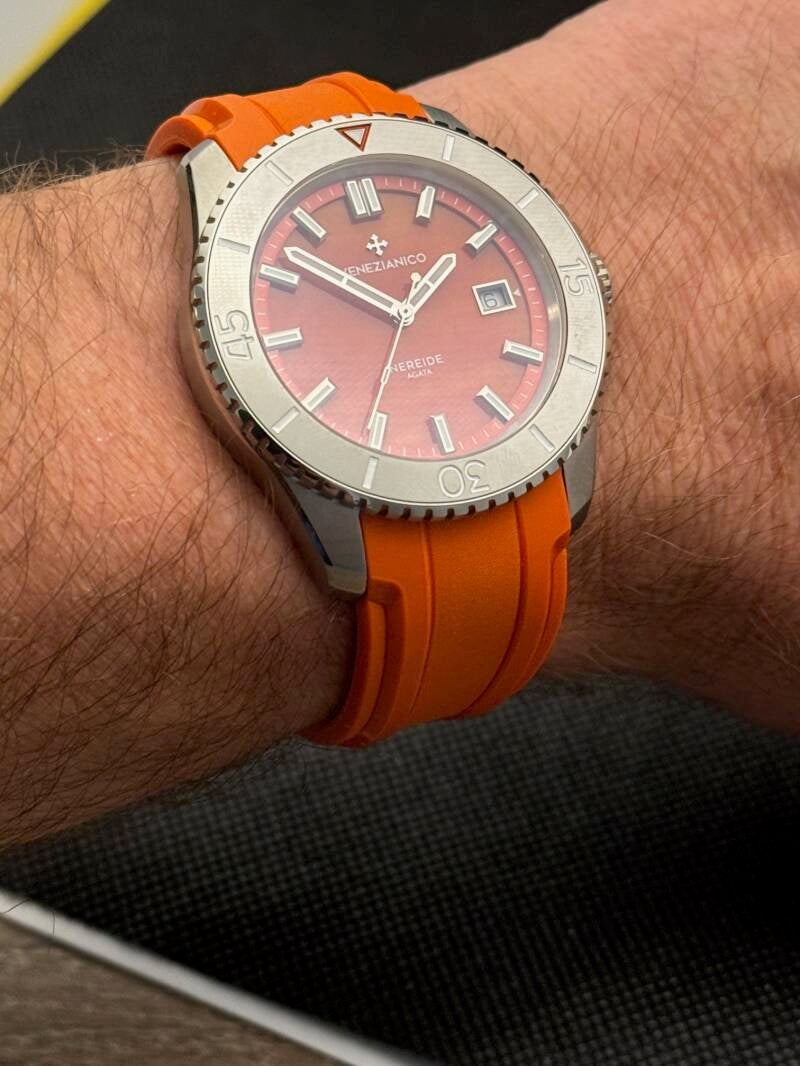





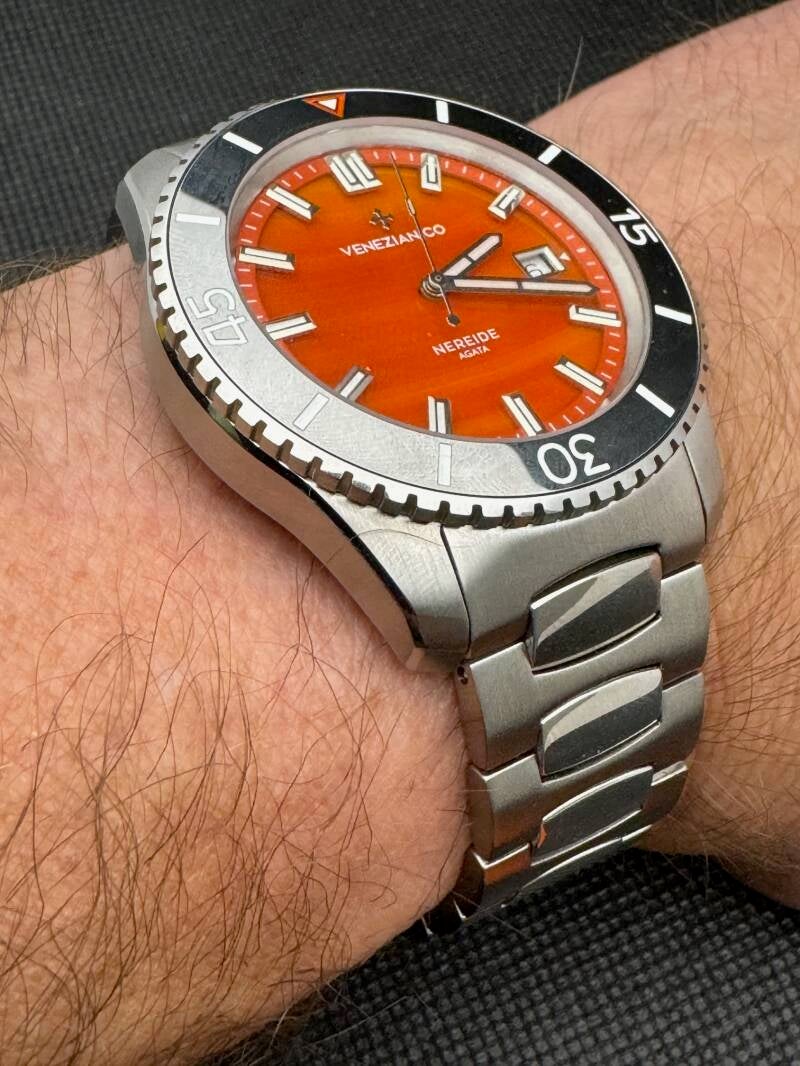
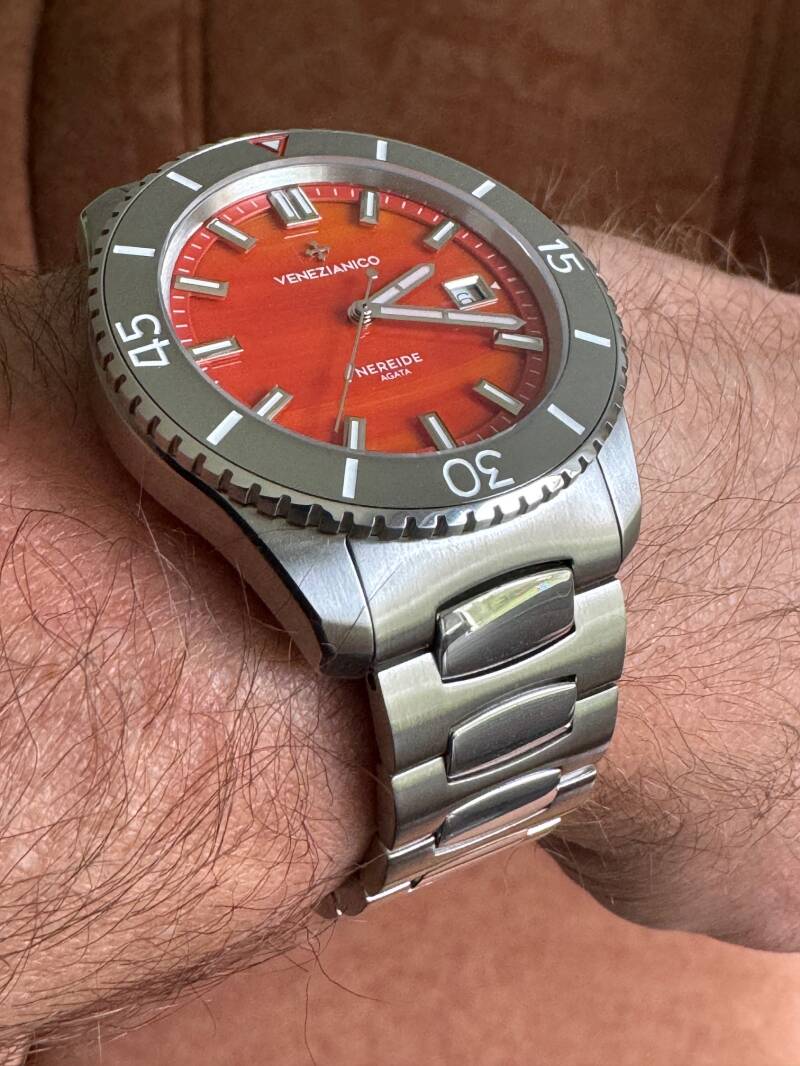

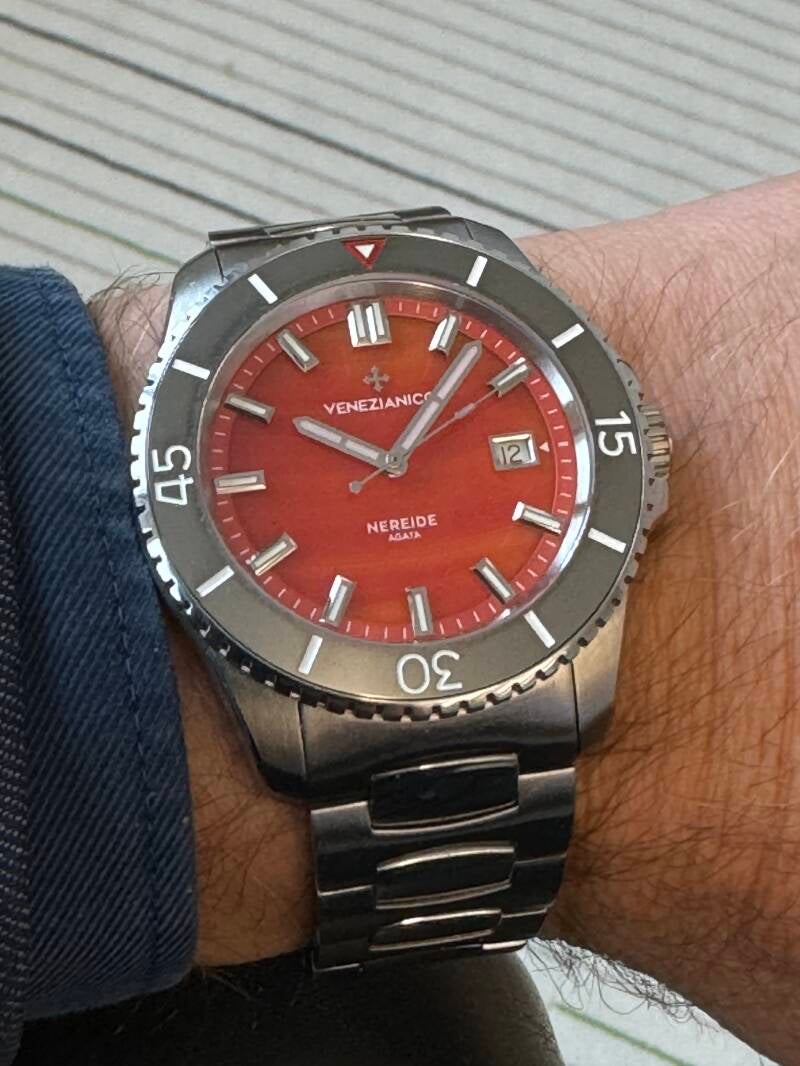


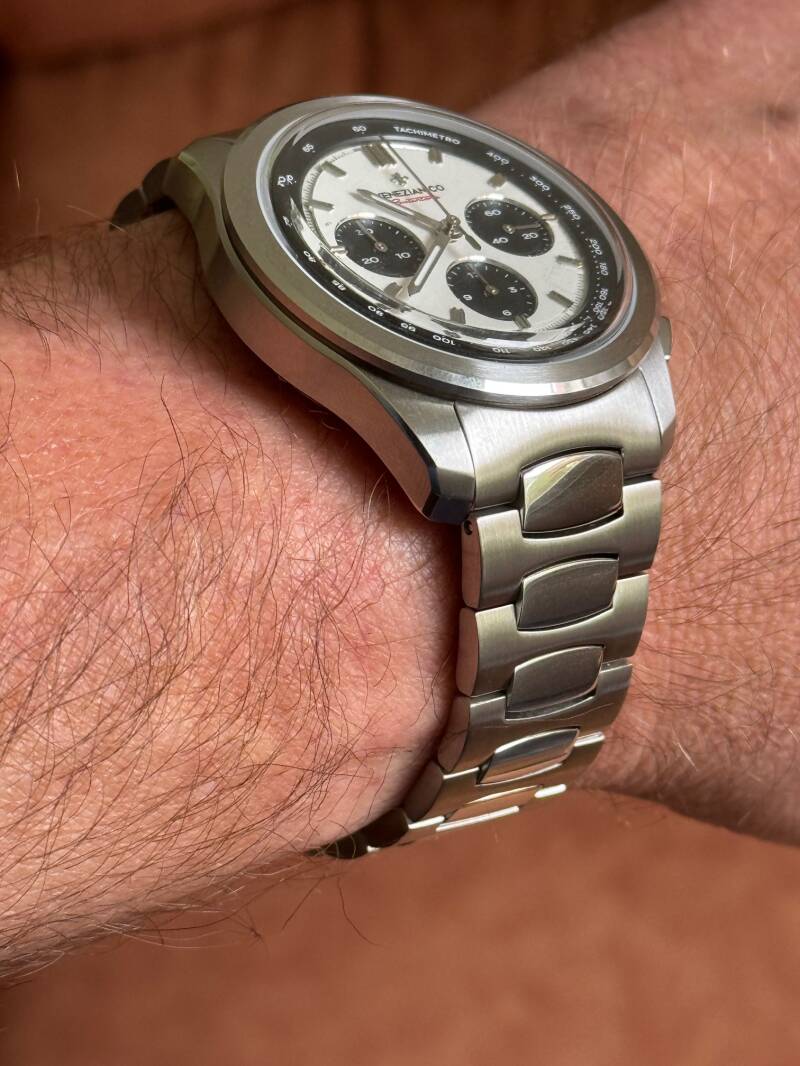



Add comment
Comments